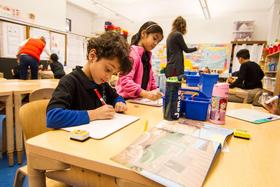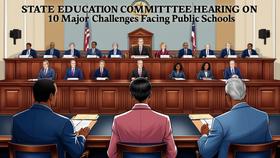Graceland Elementary School serves 262 students in grades Kindergarten-6.
The student-teacher ratio of 15:1 was higher than the Missouri state level of 12:1.
Minority enrollment was 98% of the student body (majority Black), which was higher than the Missouri state average of 32% (majority Black).
School Overview
Grades Offered
Grades Kindergarten-6
Total Students
262 students
Total Classroom Teachers
17 teachers
School Rankings
Student-Teacher Ratio
15:1
12:1
American Indian
n/a
n/a
Asian
n/a
2%
Hispanic
1%
8%
Black
97%
15%
White
2%
68%
Hawaiian
n/a
1%
Two or more races
n/a
6%
All Ethnic Groups
Eligible for Free Lunch
84%
42%
Eligible for Reduced Lunch
3%
7%
School Statewide Testing
School District Name
Source: National Center for Education Statistics (NCES), MO Dept. of Education
Frequently Asked Questions
How many students attend Graceland Elementary School?
262 students attend Graceland Elementary School.
What is the racial composition of the student body?
97% of Graceland Elementary School students are Black, 2% of students are White, and 1% of students are Hispanic.
What is the student-teacher ratio of Graceland Elementary School?
Graceland Elementary School has a student ration of 15:1, which is higher than the Missouri state average of 12:1.
What grades does Graceland Elementary School offer ?
Graceland Elementary School offers enrollment in grades Kindergarten-6
What school district is Graceland Elementary School part of?
Graceland Elementary School is part of Kansas City 33 School District.
Recent Articles

Bullying, Name-Calling & Put-Downs: Parent Guide 2025
Practical tips for parents to address bullying, name-calling, and put-downs鈥攚ith 2025 data, policies, and expert strategies.

What Is a Magnet School? (2025 Guide)
Explore what a magnet school is, how it works, and its benefits in 2025. Clear explanation for parents, students, and educators.

Cooperative Learning in 2025: Evidence, Best Practices & Challenges
Explore cooperative learning in 2025鈥攏ew data, updated practices, expert insights for educators and families.





